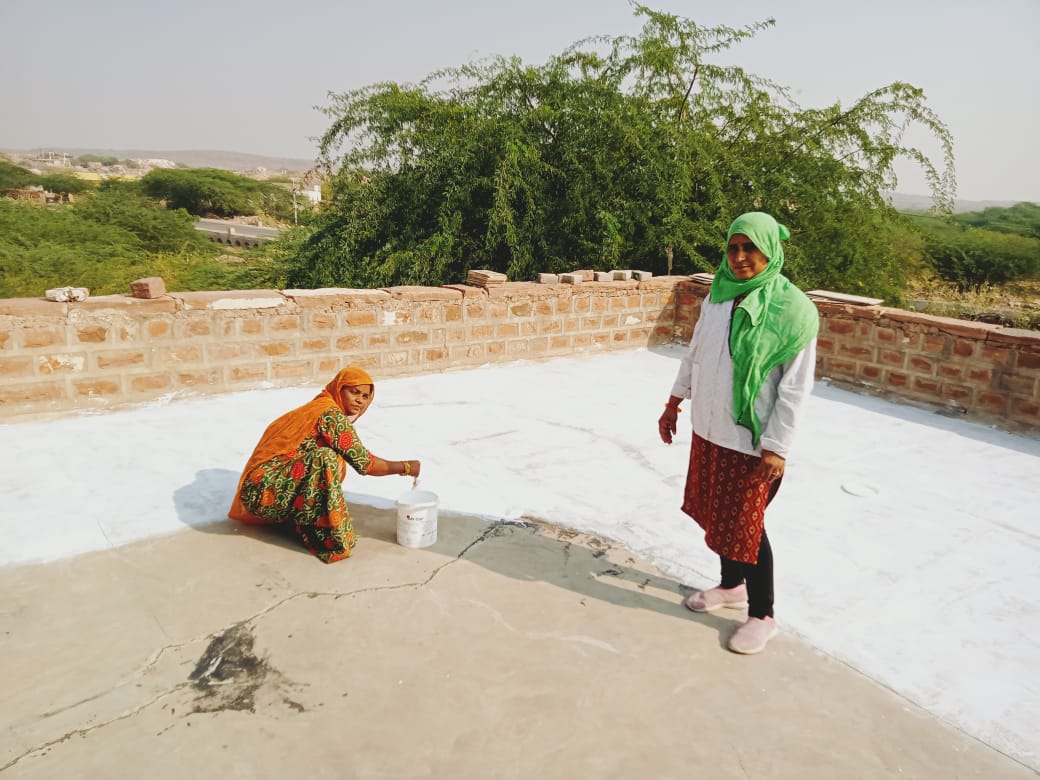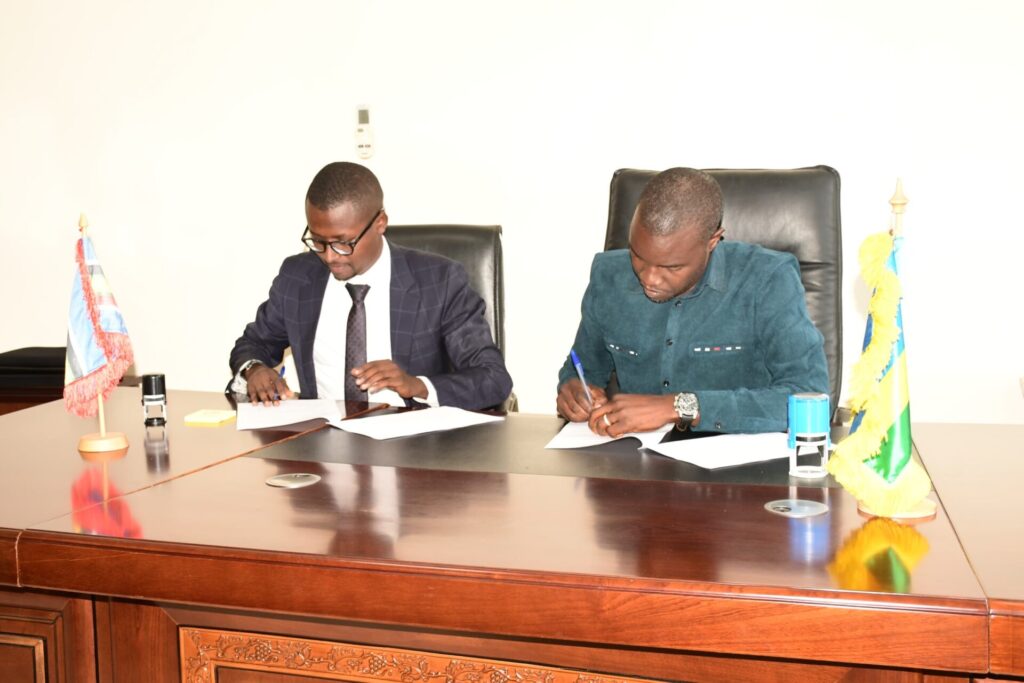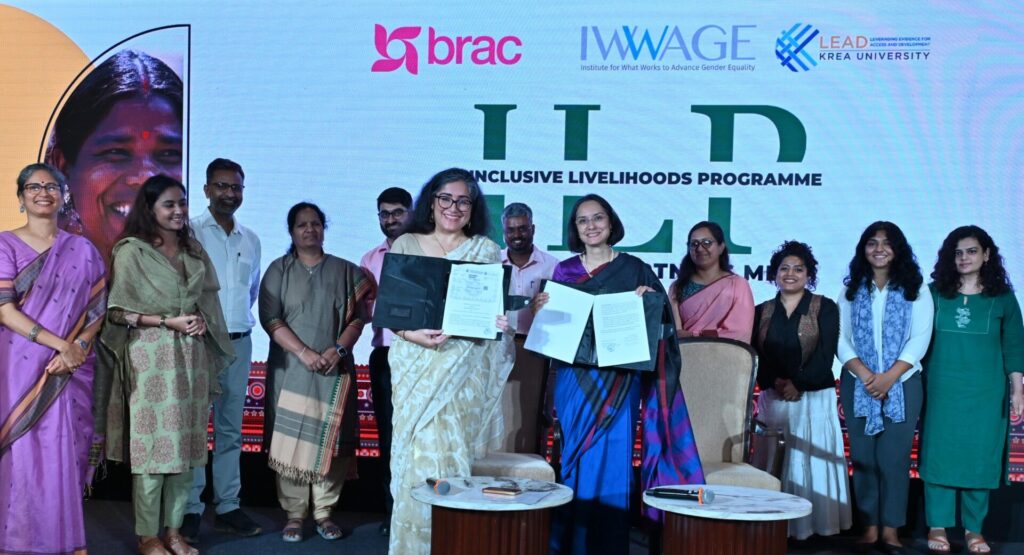Image (above) credit: Mahila Housing Trust
By Boudewijn Weijermars, Technical Advisor; Shweta S. Banerjee, India Country Lead; Ramesh Veluru, India Programme Officer; and Courtney Calardo, Head of Communications, at BRAC International Ultra-Poor Graduation Initiative
India is not alone in the world in experiencing the effects of the current 1°C global warming. Heatwaves, floods, and droughts are affecting the lives and livelihoods of communities across the region. Though the country is already experiencing the adverse effects of climate change, most climate change policies and finance focus on climate mitigation – receiving eight times more funding than climate adaptation.
Climate adaptation is critical to address the impacts of climate shocks which are already happening and disproportionately affecting vulnerable populations like women in poverty. Responding to the devastating impact of heatwaves will require a concerted, collaborative effort to adapt programmes and explore effective, coordinated, local solutions for those most affected – learning and adjusting along the way. We must work together to apply what we already know works and swiftly equip women in poverty with resources and tools to build resilient livelihoods and respond to heat stress.
Based on the current challenges vulnerable people are facing and the emerging solutions that are being developed, we propose a few recommendations, which are featured in our recent paper: Climate Adaptation Within Livelihoods and Poverty Programmes: Responding to Extreme Heat in India, co-authored with Ahmedabad based organisation Mahila Housing Trust.
The first three recommendations are key to ensure government-led climate adaptation and can be mainstreamed through existing government programmes. The other three recommendations specifically address key areas to improve climate adaptation in India.
Policy Recommendations
- Leverage existing institutional infrastructure: India has a vast network of community institutions in rural and urban areas. These institutions, Self-Help Groups, Village Organisations, Cluster and Area Level Federations, and City Level Federations need to be leveraged to craft a more effective heat response strategy. Micro plans on livelihood options need to incorporate risks and measures for extreme heat episodes. Addressing climate stress needs vernacularisation of the language in which vulnerability and solutions are communicated by state and civil society. The National Rural Livelihood Mission (NRLM) and the National Urban Livelihood Mission (NULM) along with their state counterparts, as well as the municipal bodies can play a central role in cultivating locally led adaptation. State Rural Livelihood Missions (SRLMs) and State Urban Livelihood Missions (SULMs) can leverage existing government programmes and schemes from other departments like the Disaster Risk Management Department or Smart Cities Initiative for funding to build community capacity.
- Empower communities by following the locally led adaptation principles: Governments in India are responding to the increasing frequency and intensity of heat waves by introducing Heat Action Plans (HAPs). These HAPs provide a framework for implementing, coordinating, and evaluating extreme heat response activities in India. In addition to these HAPs, we suggest to follow the locally led adaptation principles to empower communities to develop context specific and bottom-up solutions to heat stress. Locally led adaptation approaches can be developed through already existing community institutions. These community institutions could create awareness and educate households on the impacts of heat stress and proactive measures to reduce the effects of extreme heat on their livelihoods and health. The staff of SRLMs, SULMs, and community cadres could undergo comprehensive training to enhance their capabilities in heat adaptation and resilience-building within vulnerable communities. To facilitate these initiatives, SRLMs/SULMs may need to allocate additional funds and resources, particularly in urban areas where community institutions often face limitations in funding for supplementary social initiatives.
- Change policies to support climate adaptation: Learning from Ahmedabad, new policies could be drafted to prohibit work for urban wage and rural day labourers on days that approach or surpass fatal wet-bulb temperatures in which the body cannot cool itself. Alternatively, governments can shift working hours during the hottest months of the year. For both policy options, income losses can be mitigated by heatwave labour insurance schemes.
- Build climate-adaptive public and private infrastructure: Many communities living in urban poverty are involved in home-based work. Therefore, new houses constructed under Pradhan Mantri Awas Yojana could prioritise thermal comfort features, including insulation, passive solar design, energy-efficient windows and doors, ventilation, and cool roofing. This could enhance living conditions, reduce energy bills, and contribute to the well-being of urban communities living in poverty, and it is aligned with India’s sustainability goals.
- Design innovative financial products: Low-cost financial products can help support households that are dependent on daily wage labour, small enterprises, and high intensity manual jobs need to be developed and offered at no cost or subsidised rates. Public sector guarantees or investments can help drive innovation from both private and public sector entities. Public sector finance can be leveraged to establish a national climate risk fund that could guarantee insurance payouts to low-income households. This would incentivise private and public sector innovation in financial products that address extreme heat.
- Include heatwave modules into livelihood and poverty programmes: Livelihood and poverty programmes need to create awareness among programme participants on the consequences of heatwaves and inform them about adaptive solutions. Two components have to be integrated into the life skill curriculum: health risks and livelihood adaptations. These two components of life skills can be incorporated into existing coaching curriculums. However, coaches need to be trained on these elements so that they can share these insights with programme participants.
Extreme heat episodes are negatively affecting the health and livelihoods of communities across India. As with any other climate shock, vulnerable populations will be least equipped and most impacted by heat stress.
We must work together to urgently develop solutions that enable people living in poverty to cope with the adverse effect heat stress has on their lives, and we need more funds allocated to climate adaptation to do so.
If we don’t take action now, we risk losing the gains made in reducing poverty in the past and any we make in the future.
For more information, please see our paper Climate Adaptation Within Livelihoods and Poverty Programmes: Responding to Extreme Heat in India, which showcases some initial solutions on how to integrate adaptive measures within rural and urban livelihoods programmes, developed by and for communities to adapt to extreme heat in India. We invite further deliberation on possible pathways to help address this problem with key stakeholders including government, civil society, and private sector.





